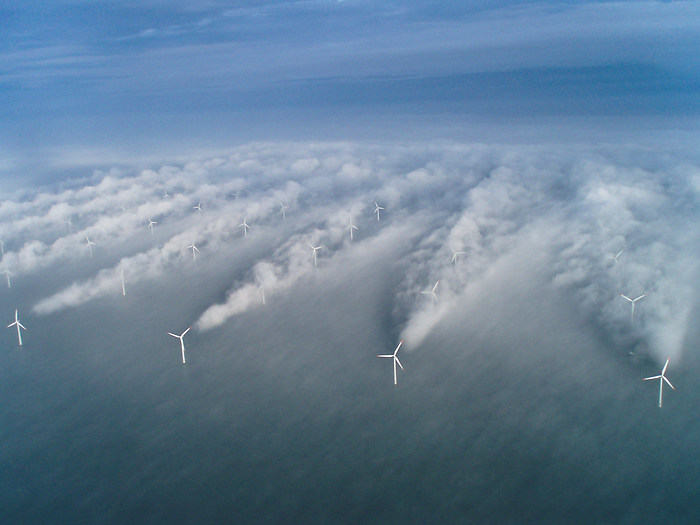

Clouds stream in the wake of wind turbines arrayed at the Horns Rev offshore wind farm in this stunning photo. But David MacKay, a physicist at the University of Cambridge in the UK, sees the image as illustrating the common problem of back-row wind turbines losing power relative to the front row.
Downstream wind turbines may lose 20 percent or even 30 percent of their power compared to their fellows in front, according to a study on wake effects at Horns Rev that MacKay highlights on his blog. The paper also emphasizes that different wind directions make it practically impossible to gauge an overall “steady state” for large wind farms, unless researchers can sample wind speeds and directions at multiple points throughout the array.
This shows that wind energy may represent a highly visible form of alternative energy, but certainly not one without its quirks and controversies. Still, better technology can squeeze more juice out of each gust, and cooperative energy-sharing efforts can help offset the fickle nature of wind power,
Readers seeking more info on the energy revolution might also look at MacKay’s book, Sustainable Energy — Without the Hot Air. The work has received rave reviews from the likes of Science magazine and The Economist, and it’s available for free digital reading here.
[via David MacKay and Dong Energy]